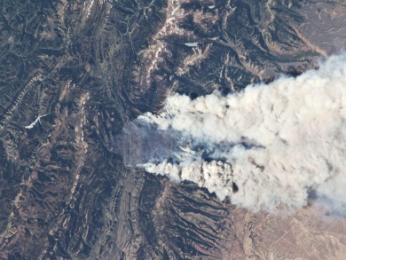A remote-controlled Earth-observing camera system called ISERV (International Space Station SERVIR Environmental Research and Visualization System) will be launched to the International Space Station (ISS) aboard the Japan Aerospace Exploration Agency's third H-II Transfer Vehicle this week. Once installed, the system will be directed by researchers on the ground to acquire imagery of specific areas of the globe for disaster analysis and environmental studies.
"ISERV came about because officials in developing countries are sometimes unable to acquire the images they need to address environmental threats and provide post-disaster assessments," said Nancy Searby, capacity building program manager for the SERVIR program at NASA Headquarters in Washington. "The SERVIR team approached NASA's ISS and Earth Science Applied Sciences Program with the concept of acquiring the needed imagery from the ISS. The ISERV test bed payload is a result of that collaboration."

